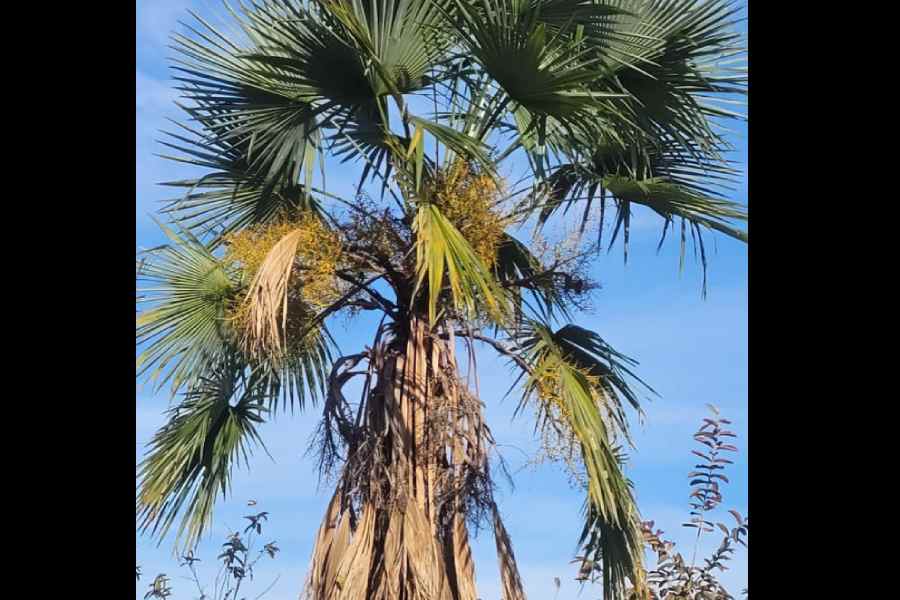Just one Windamere palm, a tree named after the iconic hotel in Darjeeling, now stands in the small stretch of forest in Kalimpong that is the only place where it grows in the wild.
Botanists have now begun a campaign to protect the plant against extinction by educating residents of the forest village of Santook-Mirik.
Rajib Gogoi, head of the Sikkim Himalayan Regional Centre of the Botanical Survey of India (BSI), discovered the threat to the palm last year, almost by chance.
Gogoi had during a two-month stay in the UK earlier in 2023 met the British botanist, Henry Noltie, who had “discovered” the palm in 1992. Noltie told him about the Windamere palm being native to a small area around a single Kalimpong village, stoking his curiosity.
“I went to Santook-Mirik and found that only one tree existed in the wild. Fortunately, the villagers were growing the tree within their premises and there were about 30-odd Windamere palms there,” Gogoi told The Telegraph.
“The species in the wild is more important to us (botanists) as those grown by villagers can be hybrids.”
Noltie, of the Royal Botanic Garden in Edinburgh, had first alerted researchers about a “strange” trachycarpus in Darjeeling during the Edinburgh Sikkim
Expedition in 1992. Noltie had noticed a pair of these trees in the garden of
Windamere Hotel in Darjeeling.
Studies confirmed that the tree, Trachycarpus latisectus, was native to a small stretch of forest in Kalimpong. It was named the Windamere palm after the site of its discovery.
Gogoi’s meeting with Noltie owed to a book on the rhododendrons of Darjeeling and Sikkim that the BSI expert had co-authored with four other botanists and published last year.
“Botanists from around the world appreciated our work,” said Samuel Rai, director, directorate of cinchona and other medicinal plants plantation, and co-author of the
book.
The other three co-authors were Bengal additional chief secretary Subrata Gupta, botanist Narbu Sherpa and BSI director A.A. Mao.
After the book’s publication, Gogoi was offered a fellowship at the Royal Botanic Garden, Edinburgh, and the Natural History Museum, London, Gogoi said. That’s how he came to meet Noltie.
Botanists aren’t certain why the palm is threatened by extinction in the wild. Over the years, however, it has been exported across the world as an ornamental plant.
The BSI (Sikkim chapter) and the directorate of cinchona decided to jointly conduct an awareness campaign in Santoor-Mirik early last week. Rai and Gogoi told the villagers
the tree needed to be conserved.
“We found out that the villagers were being paid Rs 50 per kilogram for the palm seeds. There can be around 100-150 seeds in a kilogram. If you check the various websites, a single seed sells at Rs 150,” Gogoi said.
The awareness campaign is telling the villagers they are being short-changed by those they are selling the seeds to.
“The villagers’ earnings can go up (if they can bargain better over the seeds). It (the Windamere palm in the wild) can also be marketed to promote tourism,” Gogoi said.
Samuel Rai has managed to locate a villager named Victor Rai who had helped identify the plant to the team of international botanists that had come for the initial study after Noltie’s discovery.
“He (Victor) was present at the awareness campaign,” Samuel Rai said.










